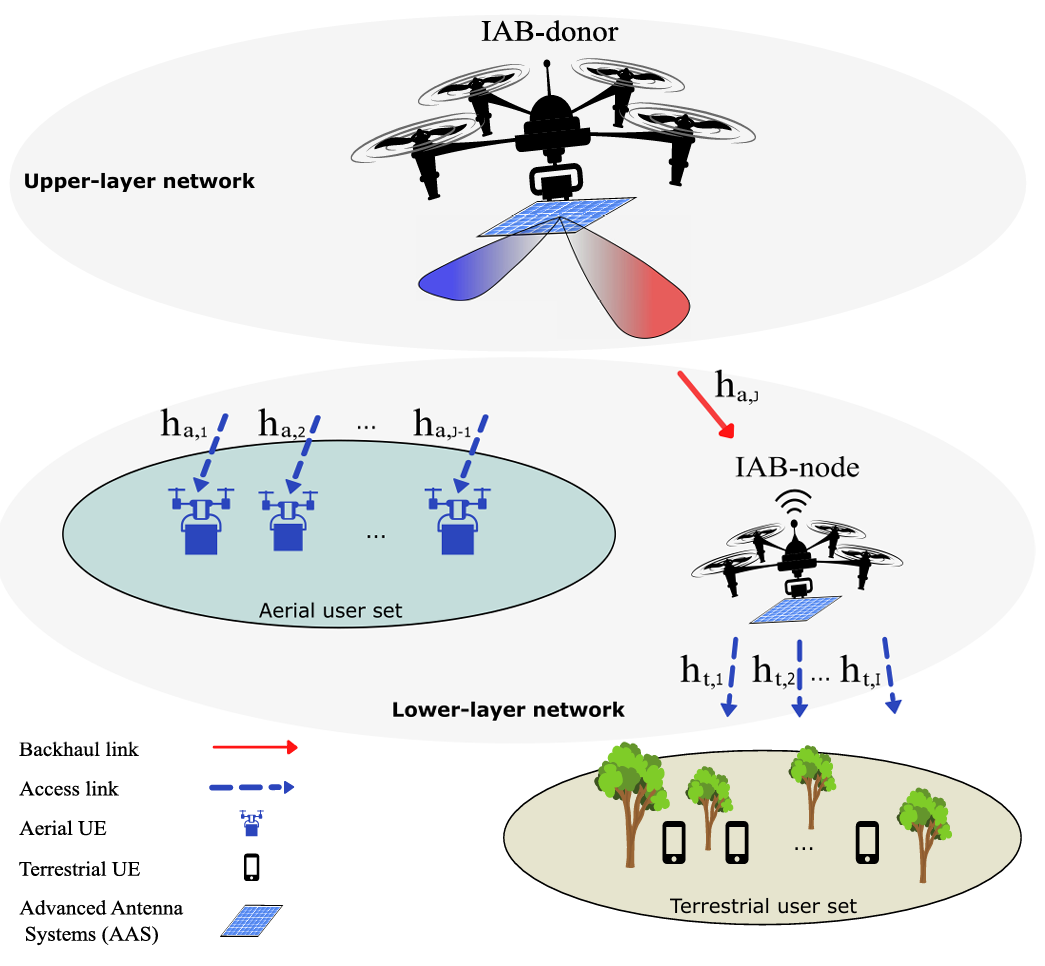Publications
2025
- IEEE Conference
 Leveraging Power Amplifier Distortion for Physical Layer SecurityReza Ghasemi Alavicheh, Thomas Feys, MD Arifur Rahman, and 1 more author10.1109/pimrc62392.2025.11275420 2025
Leveraging Power Amplifier Distortion for Physical Layer SecurityReza Ghasemi Alavicheh, Thomas Feys, MD Arifur Rahman, and 1 more author10.1109/pimrc62392.2025.11275420 2025This paper introduces a new approach to physical layer security (PLS) by leveraging power amplifier (PA) nonlinear distortion through distortion-aware precoding. While some conventional PLS techniques inject artificial noise orthogonal to legitimate channels, we demonstrate that inherent PA nonlinearities typically considered undesirable can be exploited to enhance security. The Zero 3rd order (Z3RO) precoder applies a negative polarity to several antennas to cancel the PA distortion at the user location, resulting in distortion being transmitted in non-user locations. Redirecting the distortion to non-user locations creates interference for potential eavesdroppers, lowering their signal-to-noise-and-distortion ratio (SNDR). Numerical simulations reveal that the Z3RO precoder achieves up to a 2.5x improvement in secrecy rate compared to conventional Maximum Ratio Transmission (MRT) precoding under a 10% outage probability, SNR of 32 dB and -5 dB input back-off (IBO) where the PAs enter the saturation regime.
@article{l, author = {Alavicheh, Reza Ghasemi and Feys, Thomas and Rahman, MD Arifur and Rottenberg, François}, booktitle = {2025 IEEE 36th International Symposium on Personal, Indoor and Mobile Radio Communications (PIMRC)}, title = {Leveraging Power Amplifier Distortion for Physical Layer Security}, year = {2025}, volume = {}, number = {}, pages = {1-6}, keywords = {Precoding;Nonlinear distortion;Transmitting antennas;Power amplifiers;Physical layer security;Numerical simulation;Energy efficiency;Security;Resource management;Signal to noise ratio;physical layer security (PLS);secrecy rate;beamforming;precoder;nonlinear power amplifier;distortion}, doi = {}, issn = {}, month = {10.1109/PIMRC62392.2025.11275420} }
2024
- IEEE Journal
 Integrated Access and Backhaul (IAB) in Low Altitude PlatformsReza Ghasemi Alavicheh, S. Mohammad Razavizadeh, and Halim YanikomerogluIEEE Open Journal of the Communications Society, 2024
Integrated Access and Backhaul (IAB) in Low Altitude PlatformsReza Ghasemi Alavicheh, S. Mohammad Razavizadeh, and Halim YanikomerogluIEEE Open Journal of the Communications Society, 2024In this paper, we explore the problem of utilizing Integrated Access and Backhaul (IAB) technology in Non-Terrestrial Networks (NTN), with a particular focus on aerial access networks. We consider an Uncrewed Aerial Vehicle (UAV)-based wireless network comprised of two layers of UAVs: (a) a lower layer consisting a number of flying users and a UAV Base Station (BS) that provides coverage for terrestrial users and, (b) an upper layer designated to provide both wireless access for flying users and backhaul connectivity for UAV BS. By adopting IAB technology, the backhaul and access links collaboratively share their resources, enabling aerial backhauling and the utilization of the same infrastructure and frequency resources for access links. A sum-rate maximization problem is formulated by considering aerial backhaul constraints to optimally allocate the frequency spectrum between aerial and terrestrial networks. We decompose the resulting non-convex optimization problem into two sub-problems of beamforming and spectrum allocation and then propose efficient solutions for each. Numerical results in different scenarios yield insightful findings about the effectiveness of using the IAB technique in aerial networks.
@article{10614380, author = {Alavicheh, Reza Ghasemi and Razavizadeh, S. Mohammad and Yanikomeroglu, Halim}, journal = {IEEE Open Journal of the Communications Society}, title = {Integrated Access and Backhaul (IAB) in Low Altitude Platforms}, year = {2024}, volume = {}, number = {}, pages = {1-1}, keywords = {Hybrid Beamforming;Integrated Access and Backhaul;IAB;Low Altitude Platform;LAP;Successive Convex Approximation;SCA;Uncrewed Aerial Vehicle;Unmanned Aerial Vehicle;UAV;Wireless Backhaul;6G}, doi = {10.1109/OJCOMS.2024.3435870}, issn = {2644-125X}, month = {} }